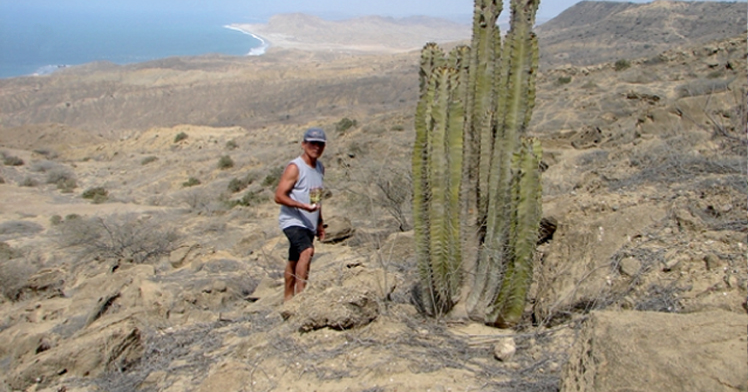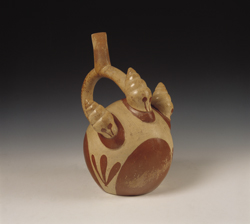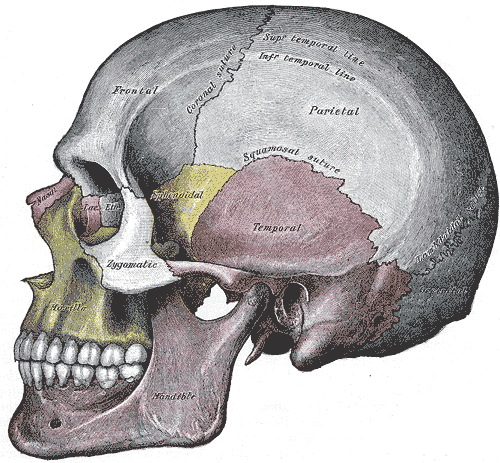|
Scutalus Phaeocheilus
''Scutalus phaeocheilus'' is a species of tropical air-breathing land snail, a pulmonate gastropod mollusk in the family Bulimulidae. Subspecies * ''Scutalus phaeocheilus altoensis'' Breure & Mogollón Avila, 2010 Distribution * PeruBreure A. S. H. & Mogollón Avila V. (2010). "Well-known and little-known: miscellaneous notes on Peruvian Orthalicidae (Gastropoda, Stylommatophora)". ''Zoologische Mededelingen'' 84HTM ''Scutalus phaeocheilus phaeocheilus'' occurs in south of the Lambayeque Region. Description When describing the nominate taxon, Haas already noted the relationship with ''Scutalus proteiformis''. He stated that this species ‘seems to lack the granules entirely’. According to Pilsbry (1897), who copied the original description, the ‘granulation sconfined to the last whorl’. However, ''Scutalus phaeocheilus altoensis'' is smaller and slightly stouter than ''Scutalus proteiformis'' and is also slightly more granulose than this species, especia ... [...More Info...] [...Related Items...] OR: [Wikipedia] [Google] [Baidu] |
Fritz Haas (zoologist)
Fritz Haas (January 4, 1886 – December 26, 1969 in Hollywood, Florida) was a Jewish German zoologist born in Frankfurt am Main. He specialized in the field of malacology. He was trained in biology by herpetologist Oskar Boettger (1844–1910) and malacologist Wilhelm Kobelt (1840–1916). From 1911 to 1936, he was a curator of invertebrate zoology at the Senckenberg Museum in Frankfurt am Main. On June 30, 1936, the Nazis removed him from his position at the Senckenberg Museum. Fleeing Germany, Haas was appointed as the first curator of the new department of lower invertebrates (now the Division of Invertebrates) at the Field Museum of Natural History in Chicago, a position he retained until 1959. He identified and cataloged specimens that had lain unexamnied since the 1893 World Columbian Exposition, starting to build the museum's now world-class collection of aquatic invertebrates. Haas' specialty involved the study of land and freshwater snails, as well as research of the fami ... [...More Info...] [...Related Items...] OR: [Wikipedia] [Google] [Baidu] |
Scutalus Proteiformis
''Scutalus'' is a genus of air-breathing land snails, a terrestrial animal, terrestrial pulmonate gastropod mollusks in the family Bulimulidae.Breure A. S. H. & Romero P. (2012). "Support and surprises: molecular phylogeny of the land snail superfamily Orthalicoidea using a three-locus gene analysis with a divergence time analysis and ancestral area reconstruction (Gastropoda: Stylommatophora)". ''Archiv für Molluskenkunde: International Journal of Malacology'' 141(1): 1-20. . Previously this genus was placed within the subfamily Bulimulinae.Breure A. S. H. (1979). "Systematics, phylogeny and zoogeography of Bulimulinae (Mollusca)". ''Zoologische Verhandelingen'' Leiden 168: 1-215, figs 1-182, pls. 1-3, tables 1-5PDF Species Species in the genus ''Scutalus'' include: * ''Scutalus baroni'' (Fulton, 1896) * ''Scutalus broggii'' (Pilsbry & Olsson, 1949) * ''Scutalus chango'' Araya & Breure, 2017 * ''Scutalus chiletensis'' Weyrauch, 1967 * ''Scutalus coraeformis'' (Pilsbry, 1897 ... [...More Info...] [...Related Items...] OR: [Wikipedia] [Google] [Baidu] |
Suture (gastropod)
In anatomy, a suture is a fairly rigid joint between two or more hard elements of an organism, with or without significant overlap of the elements. Sutures are found in the skeletons or exoskeletons of a wide range of animals, in both invertebrates and vertebrates. Sutures are found in animals with hard parts from the Cambrian period to the present day. Sutures were and are formed by several different methods, and they exist between hard parts that are made from several different materials. Vertebrate skeletons The skeletons of vertebrate animals (fish, amphibians, reptiles, birds, and mammals) are made of bone, in which the main rigid ingredient is calcium phosphate. Cranial sutures The skulls of most vertebrates consist of sets of bony plates held together by cranial sutures. These sutures are held together mainly by Sharpey's fibers which grow from each bone into the adjoining one. Sutures in the ankles of land vertebrates In the type of crurotarsal ankle which is foun ... [...More Info...] [...Related Items...] OR: [Wikipedia] [Google] [Baidu] |
Protoconch
A protoconch (meaning first or earliest or original shell) is an embryonic or larval shell which occurs in some classes of molluscs, e.g., the initial chamber of an ammonite or the larval shell of a gastropod. In older texts it is also called "nucleus". The protoconch may sometimes consist of several whorls, but when this is the case, the whorls show no growth lines. The whorls of the adult shell, which are formed after the protoconch, are known as the teleoconch. The teleoconch starts forming when the larval gastropod becomes a juvenile, and the protoconch may dissolve. Quite often there is a visible line of demarcation where the protoconch ends and the teleoconch begins, and there may be a noticeable change in sculpture, or a sudden appearance of sculpture at that point. In some gastropod groups (such as the Architectonicidae), the teleoconch whorls spiral in the opposite direction to the protoconch. In those cases, the shell is called heterostrophic. In species whic ... [...More Info...] [...Related Items...] OR: [Wikipedia] [Google] [Baidu] |
Whorl (mollusc)
A whorl is a single, complete 360° revolution or turn in the spiral growth of a mollusc shell. A spiral configuration of the shell is found in numerous gastropods, but it is also found in shelled cephalopods including '' Nautilus'', '' Spirula'' and the large extinct subclass of cephalopods known as the ammonites. A spiral shell can be visualized as consisting of a long conical tube, the growth of which is coiled into an overall helical or planispiral shape, for reasons of both strength and compactness. The number of whorls which exist in an adult shell of a particular species depends on mathematical factors in the geometric growth, as described in D'Arcy Wentworth Thompson's classic 1917 book '' On Growth and Form'', and by David Raup. The main factor is how rapidly the conical tube expands (or flares-out) over time. When the rate of expansion is low, such that each subsequent whorl is not that much wider than the previous one, then the adult shell has numerous whorl ... [...More Info...] [...Related Items...] OR: [Wikipedia] [Google] [Baidu] |
Aperture (mollusc)
The aperture is an opening in certain kinds of mollusc shells: it is the main opening of the shell, where the head-foot part of the body of the animal emerges for locomotion, feeding, etc. The term ''aperture'' is used for the main opening in gastropod shells, scaphopod shells, and also for '' Nautilus'' and ammonite shells. The word is not used to describe bivalve shells, where a natural opening between the two shell valves in the closed position is usually called a '' gape''. Scaphopod shells are tubular, and thus they have two openings: a main anterior aperture and a smaller posterior aperture. As well as the aperture, some gastropod shells have additional openings in their shells for respiration; this is the case in some Fissurellidae (keyhole limpets) where the central smaller opening at the apex of the shell is called an orifice, and in the Haliotidae (abalones) where the row of respiratory openings in the shell are also called orifices. In gastropods In some pros ... [...More Info...] [...Related Items...] OR: [Wikipedia] [Google] [Baidu] |
Last Whorl
The body whorl is part of the morphology of the shell in those gastropod mollusks that possess a coiled shell. The term is also sometimes used in a similar way to describe the shell of a cephalopod mollusk. In gastropods In gastropods, the body whorl, or last whorl, is the most recently formed and largest whorl (or revolution) of a spiral or helical shell, terminating in the aperture. It is called the "body whorl" because most of the body of the soft parts of the animal fits into this whorl. The proportional size of the body whorl in gastropod shells differs greatly according to the actual shell morphology. For shells in which the rate of whorl expansion of each revolution around the axis is very high, the aperture and the body whorl are large, and the shell tends to be low spired. The shell of the abalone is a good example of this kind of shell. The opposite tendency can sometimes create a high spire with very little whorl increase per revolution. In these instances, e.g ... [...More Info...] [...Related Items...] OR: [Wikipedia] [Google] [Baidu] |
Sculpture (mollusc)
Sculpture is a feature of many of the shells of mollusks. It is three-dimensional ornamentation on the outer surface of the shell, as distinct from either the basic shape of the shell itself or the pattern of colouration, if any. Sculpture is a feature found in the shells of gastropods, bivalves, and scaphopods. The word "sculpture" is also applied to surface features of the aptychus of ammonites, and to the outer surface of some calcareous opercula of marine gastropods such as some species in the family Trochidae. Sculpture can be concave or convex, incised into the surface or raised from it. Sometimes the sculpture has microscopic detailing. The term "sculpture" refers only to the calcareous outer layer of shell, and does not include the proteinaceous periostracum, which is in some cases textured even when the underlying shell surface is smooth. In many taxa, there is no sculpture on the shell surface at all, apart from the presence of fine growth lines. The sc ... [...More Info...] [...Related Items...] OR: [Wikipedia] [Google] [Baidu] |
El Alto
El Alto (Spanish for "The Heights") is the second-largest city in Bolivia, located adjacent to La Paz in Pedro Domingo Murillo Province on the Altiplano highlands. El Alto is today one of Bolivia's fastest-growing urban centers, with an estimated population of 943,558 in 2020. It is also the highest major city in the world, with an average elevation of . The El Alto–La Paz metropolitan area, formed by La Paz, El Alto, Achocalla, Viacha, and Mecapaca, constitutes the most populous urban area of Bolivia, with a population of about 2.2 million. History The dry and inclement plain above La Paz was uninhabited until 1903 when the newly built railways from Lake Titicaca and Arica reached the rim of the canyon, where the La Paz terminus, railyards and depots were built along with a settlement of railway workers (a spur line down into the canyon opened in 1905). In 1925, the airfield was built as a base for the new air force, which attracted additional settlement. In 1939, El Alto' ... [...More Info...] [...Related Items...] OR: [Wikipedia] [Google] [Baidu] |
Acta Zoologica Lilloana
Acta or ACTA may refer to: Institutions * Anti-Counterfeiting Trade Agreement, an intellectual property trade agreement * Administrative Council for Terminal Attachments, a standards organization for terminal equipment such as registered jacks * Alameda Corridor Transportation Authority, in southern California * American Council of Trustees and Alumni, an education organization * Atlantic County Transportation Authority, a transportation agency in Atlantic County, New Jersey * Australian Community Television Alliance, an industry association representing community television licensees in Australia Science and technology * Acta, the transactions ( proceedings) of an academic field, a learned society, or an academic conference * Acta (software), early outliner software * Activin A, mammalian protein * ACTA1, actin alpha 1 (skeletal muscle), human protein * ACTA2, actin alpha 2 (smooth muscle), human protein * Actin assembly-inducing protein, motility protein in the bacteri ... [...More Info...] [...Related Items...] OR: [Wikipedia] [Google] [Baidu] |
Proceedings Of The Academy Of Natural Sciences, Philadelphia
In academia and librarianship, conference proceedings is a collection of academic papers published in the context of an academic conference or workshop. Conference proceedings typically contain the contributions made by researchers at the conference. They are the written record of the work that is presented to fellow researchers. In many fields, they are published as supplements to academic journals; in some, they are considered the main dissemination route; in others they may be considered grey literature. They are usually distributed in printed or electronic volumes, either before the conference opens or after it has closed. A less common, broader meaning of proceedings are the acts and happenings of an academic field, a learned society. For example, the title of the ''Acta Crystallographica'' journals is New Latin for "Proceedings in Crystallography"; the ''Proceedings of the National Academy of Sciences of the United States of America'' is the main journal of that academy. S ... [...More Info...] [...Related Items...] OR: [Wikipedia] [Google] [Baidu] |
Henry Augustus Pilsbry
Henry Augustus Pilsbry (7 December 1862 – 26 October 1957) was an American biologist, malacologist and carcinologist, among other areas of study. He was a dominant presence in many fields of invertebrate taxonomy for the better part of a century. For much of his career, his authority with respect to the classification of certain substantial groups of organisms was unchallenged: barnacles, chitons, North American terrestrial mollusks, and others. Biography Pilsbry (frequently misspelled ''Pilsbury'') spent his childhood and youth in Iowa. He was called "Harry" Pilsbry then, and developed an early fascination with the limited variety of mollusks he was able to find. He attended the University of Iowa, and received the Bachelor of Science degree there in 1882, but did not immediately find employment in his field of interest. Instead, Henry Pilsbry worked for publishing firms and newspapers for the next several years, but devoted most of his spare time to the study of mollusks. ... [...More Info...] [...Related Items...] OR: [Wikipedia] [Google] [Baidu] |









